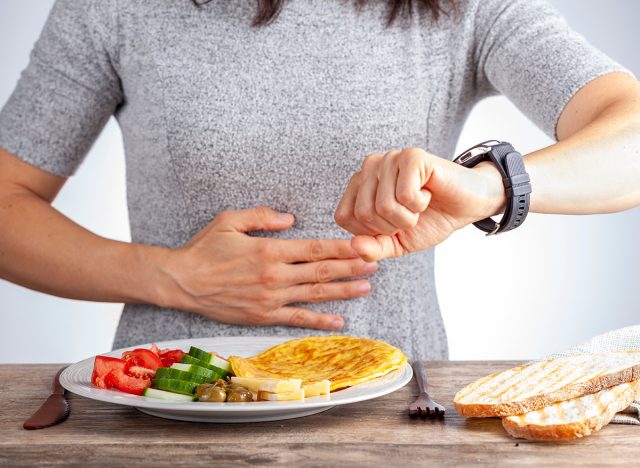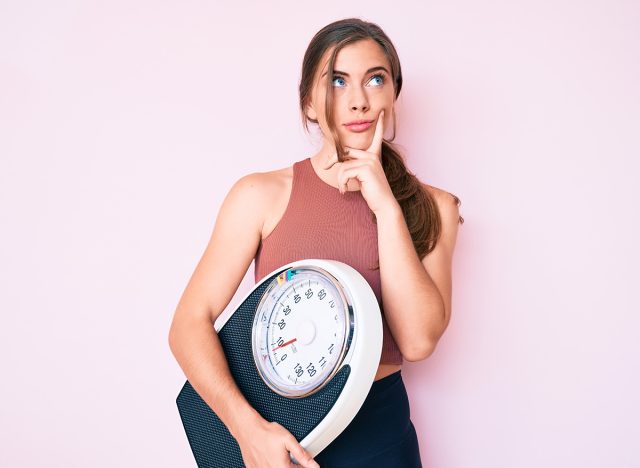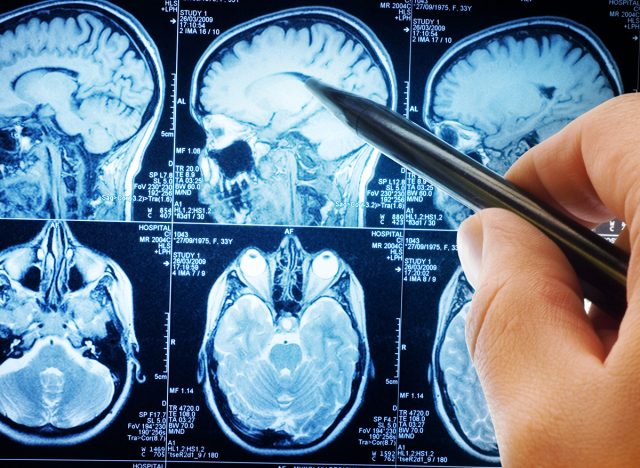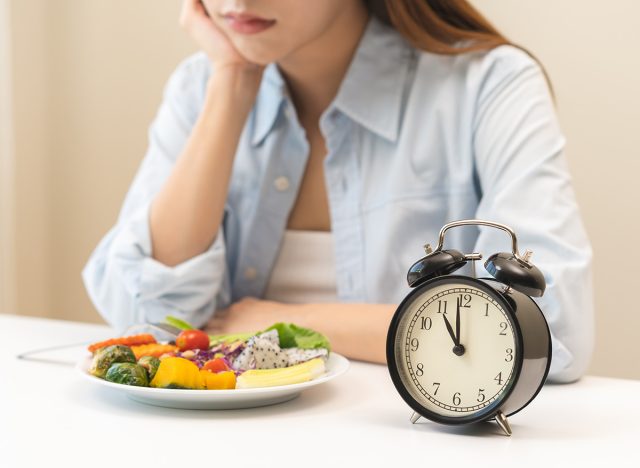4 Incredible Ways Your Body Changes When Intermittent Fasting

Time-restricted eating (TRE), including intermittent fasting (IF), is a popular approach to achieving health-related goals, including weight loss. Here, we'll take a look at what happens during fasting and why IF is thought to be helpful for improving health. My name is Annette Snyder, and I've been a registered dietitian (RD) for nearly 20 years. I've had extensive experience in the practice areas of weight management, diabetes care, and digestive disorders, especially via my work with Top Nutrition Coaching. I currently maintain additional board certification (CSOWM) in weight management through the Commission on Dietetic Registration, the credentialing body for the Academy of Nutrition and Dietetics. I'm passionate about the new things nutrition science is teaching us. My goal is to share that knowledge in a way that inspires others to get curious about their health.
What is Time-Restricted Eating (TRE) or Intermittent Fasting (IF)?

TRE can take different forms; IF is the most popular at present. While I've heard it described as "a fancy way to keep skipping breakfast," there is more to it than that. Typically, when we talk about eating patterns, we look at the what and often why of how people nourish themselves the way they do. TRE focuses primarily on when. Essentially, there is a specific window of time for eating, and the remainder is fasting, with only water or plain tea or coffee consumed. The goal is to get the body from burning the calories you eat from food to storing fat for fuel during the fasting period.
Related: I Lost 80 Pounds Eating What I Love & Here Are My Simple Tricks
What Happens to Your Body During a Fast

So what is going on during a fast? The body's circadian rhythm has a lot to do with why fasting might benefit health. Circadian rhythms (*1) are the 'physical, mental, and behavioral changes an organism experiences over a 24-hour cycle.' Light and dark have the biggest influence, though they are not the only factors. We have learned (*2) that food-processing organs like your liver or pancreas follow the circadian rhythm. During the daytime, the pancreas makes and releases insulin, which in turn tells the liver to take sugar from the blood and put it into storage as well as guide sugar into the cells where energy is made (bringing the raw materials to the factory, so to speak).
During times of fasting and to promote more emergency sugar storage, the pancreas releases more of the hormone glucagon3. Toward the end of the day and during the night, the pancreas slows down insulin production. In the last few hours of the day, toward bedtime, melatonin (made in the pineal gland in the brain) also kicks in and slows the making of insulin, slowing down gut motility. Stomach emptying and digestion-related blood flow are better during the daytime and less toward and during the night (*3).
With the brain needing to rest and do its daily repairs and clean up, the body follows suit. While we sleep, our body is busy breaking down cholesterol and repairing or removing damaged cell mitochondria. When we eat during normal sleeping hours, these processes have to stop so food can be broken down, and fat stores are built up. Even if your calorie count looks perfect, if you eat during this time, you may see problems (like weight gain) occur. Your body just isn't set up for those 2 AM tacos!
You Run on Stored Fuel

During a fast, we run on stored fuel. At first, we get the fuel from stored sugar in the liver and muscles (glycogen). When that supply runs out, typically within 12-24 hours (*4), we start making fuel from ketones in our mitochondria. Ketones come from breaking down body fat. This fuel switchover and the higher level of ketones in the blood have been pinpointed as the reason for some of the health benefits. We also start to make sugar from proteins during this time. Protein stores can come from muscle. The dependence on this process gradually stops (*4) as the body gets better at using ketones. (There is a risk of losing muscle mass if you're not paying attention to your nutrition.)
Related: 3 Simple Weight Loss Tips You'll Wish You Knew Sooner
You May Have Increased Focus

Some scientists suggest that higher ketone levels help brain function (*5). Levels of the neurotransmitter GABA (which has a calming effect) go up, and levels of glutamate (which has an exciting effect) go down. This is thought to enhance focus. Studies have also found increased brain levels of BDNF (brain-derived neurotrophic factor), which has a huge role in keeping neurons (nerve cells) healthy and firing (*6). BDNF can increase the number of mitochondria (energy-producing factories) in the body's cells. Fasting is considered a mild stressor, and the neurons adjust and respond by increasing their mitochondria. When the nerve cells make more fuel, it powers and helps create more synapses (the space between neurons where 'messages' from neurotransmitters travel). Synapses could be compared to a highway, and adding more highways results in better transmission of messages (the vehicles on the highways).
Final Word From the Expert

As you can see, your body is pretty cool. It adapts. Learning to work with it and its natural rhythms instead of against it may be the best thing you can do for your health. Stay curious, friends!
Cited References
- National Institutes of Health (NIH) (n.d.). Circadian rhythms. National Institute of General Medical Sciences. Retrieved January 14, 2024, from https://www.nigms.nih.gov/education/fact-sheets/Pages/circadian-rhythms.aspx
- Arble DM, Bass J, Laposky AD, Vitaterna MH, Turek FW. Circadian timing of food intake contributes to weight gain. Obesity (Silver Spring). 2009;17(11):2100-2102. doi:10.1038/oby.2009.264
- Patterson RE, Sears DD. Metabolic Effects of Intermittent Fasting. Ann Rev Nutr. 2017;37(1):371-393. doi: 10.1146/annurev-nutr-071816-064634.
- Sanvictores T, Casale J, Huecker MR. Physiology, Fasting. [Updated 2023 Jul 24]. In: StatPearls [Internet]. Treasure Island (FL): StatPearls Publishing; 2023 Jan-. Available from: https://www.ncbi.nlm.nih.gov/books/NBK534877/
- Poff AM, Rho JM, D'Agostino DP. Ketone Administration for Seizure Disorders: History and Rationale for Ketone Esters and Metabolic Alternatives. Front Neurosci. 2019;13:1041. Published 2019 Oct 15. doi:10.3389/fnins.2019.01041
- Markham A, Bains R, Franklin P, Spedding M. Changes in mitochondrial function are pivotal in neurodegenerative and psychiatric disorders: how important is BDNF?. Br J Pharmacol. 2014;171(8):2206-2229. doi:10.1111/bph.12531




